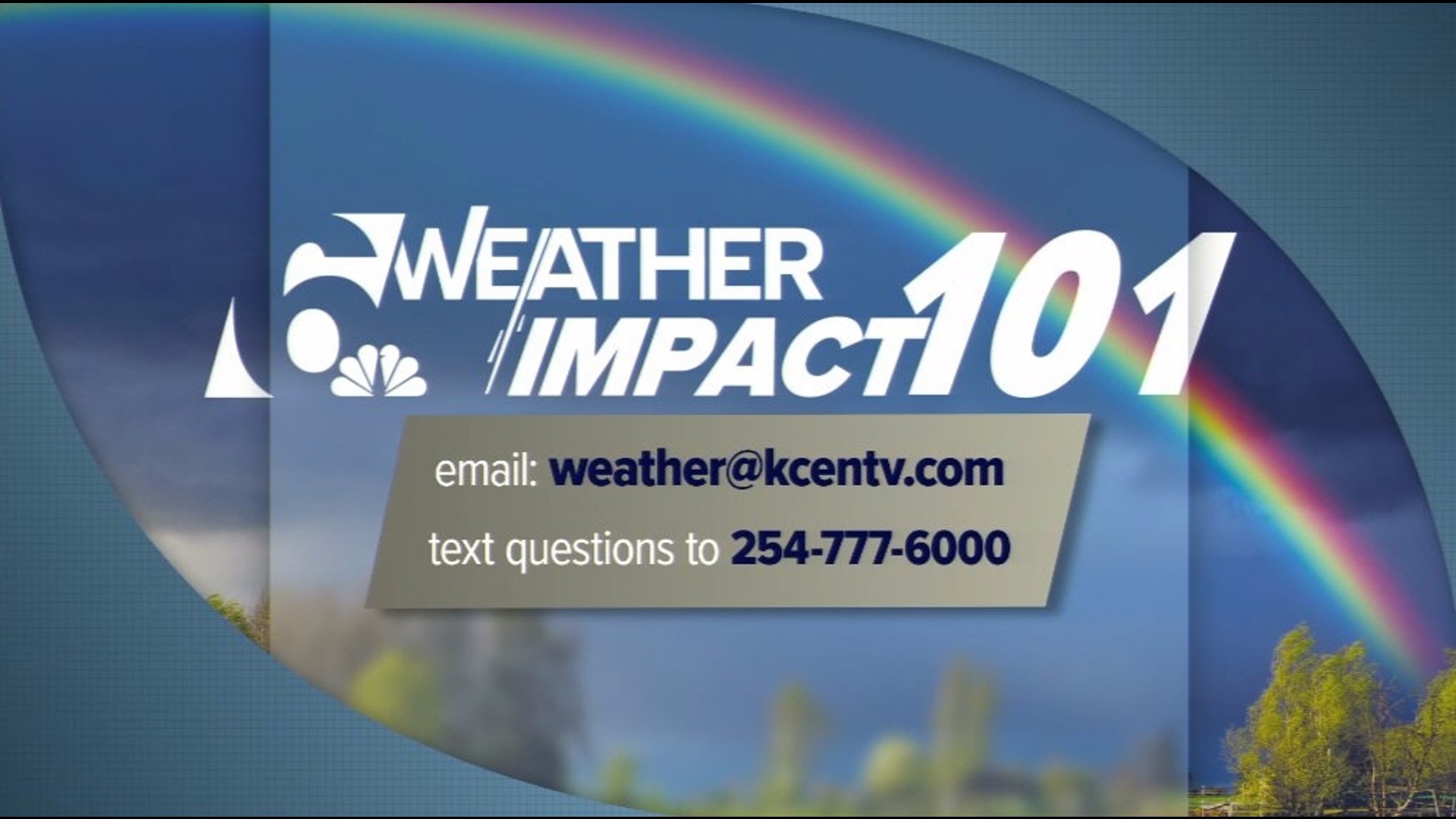TEMPLE, Texas —
In this Weather Impact 101, we are talking about a weather phenomenon that the National Oceanic and Atmospheric Administration estimates costs Americans more than a BILLION dollars each year. This damaging phenomenon is, of course, hail.
According to the Dallas Morning News, Dallas is the hardest hit city in Texas each year, with an annual expected loss of over 100 million dollars. In this Weather Impact 101, we'll look at how hail forms and how those hailstones can reach some pretty extraordinary sizes.
WHERE DOES IT COME FROM?
To understand where hail comes from, we first have to talk about thunderstorm development. Clouds and thunderstorms are created when rising air carries heat and humidity into the atmosphere. We call these rising plumes of air updrafts. As air rises, it cools. Once updrafts reach a certain height, the humidity cools to a point where it condenses into water droplets, creating clouds and rain. In the strongest storms, these updrafts can reach a point where the temperatures are below freezing. As updrafts carry water droplets above the freezing level, those water droplets freeze into ice. This is hail.
HOW DO THEY GROW?
Hail size is dependent on the strength of the updraft that is carrying it. As long as the weight of the hail is less than the force of the updraft, it will stay in the storm cloud.
Here's the process:
- The updraft pushes the water droplet above the freezing layer, and it freezes into a hailstone.
- The weight of the hailstone causes it to fall into above-freezing air where it collects more water
- The updraft pushes the hailstone back into freezing air and the newly collected water freezes into a new layer on the hailstone
That process continues until the hailstone is so heavy it overcomes the updraft and falls to the ground. In this way, the stronger the updraft; the larger the hailstone. If you cut into a hailstone, you would see rings in the stone, much like you would find inside of a tree trunk.
COMMON SIZES OF HAILSTONES
We measure hailstone diameters in inches in the United States, but to add a reference point, we also compare those measurements with everyday items. For example, a 1/4" hailstone compares pretty closely to a Sweet Pea. 1/2" hailstones are closer to marble-sized, and anything from 3/4" to 1" we refer to as "Pocket Change" hail for its similarity to pennies, nickels and quarters.
WHAT IS SEVERE?
The National Weather Service will issue a Severe Thunderstorm Warning for hail of 1" (Quarter-sized) or larger. It's at this point that hail can cause injury and property damage. Even though severe hail starts at 1" in diameter, it can get much larger than that. In Texas, it's not unheard of for Spring thunderstorms to bring hailstones that are as large as baseballs and softballs! Those can be deadly if you're caught outside in a hailstorm.
UPDRAFTS VS. HAIL SIZE
Remember that hail size is directly related to the strength of the updraft. Interestingly, we don't really notice updrafts at the surface, but once that rising air climbs into the atmosphere, it can take off! Vertical motions of 40 mph are required to sustain penny-sized hail. For severe hail, that is 1" or larger, the air must be traveling upward at close to 50 mph. For those baseballs we mentioned earlier, air would have to be rising at over 80 mph. In order to get these storm motions, there must be a significant temperature difference between the surface and the upper atmosphere. Remember that air will only keep rising if the air around it is cooler.
HAIL RECORDS
According to storm reports, the largest hailstone on record was found in South Dakota in 2010. It was 8" in diameter and weighed almost 2 pounds!
The heaviest hailstone on record, however, fell in Bangladesh in 1986. This stone came in at 2.25 pounds.
WHAT CAN WE DO?
Unfortunately, there’s not much we can do to avoid hail damage, outside of quickly filing insurance claims and getting the damage repaired after the fact.
That's it for this installment of Weather Impact 101. Be sure to binge all of our Weather Impact 101 segments on our FREE 6+ app on Apple TV, Fire TV and Roku.

